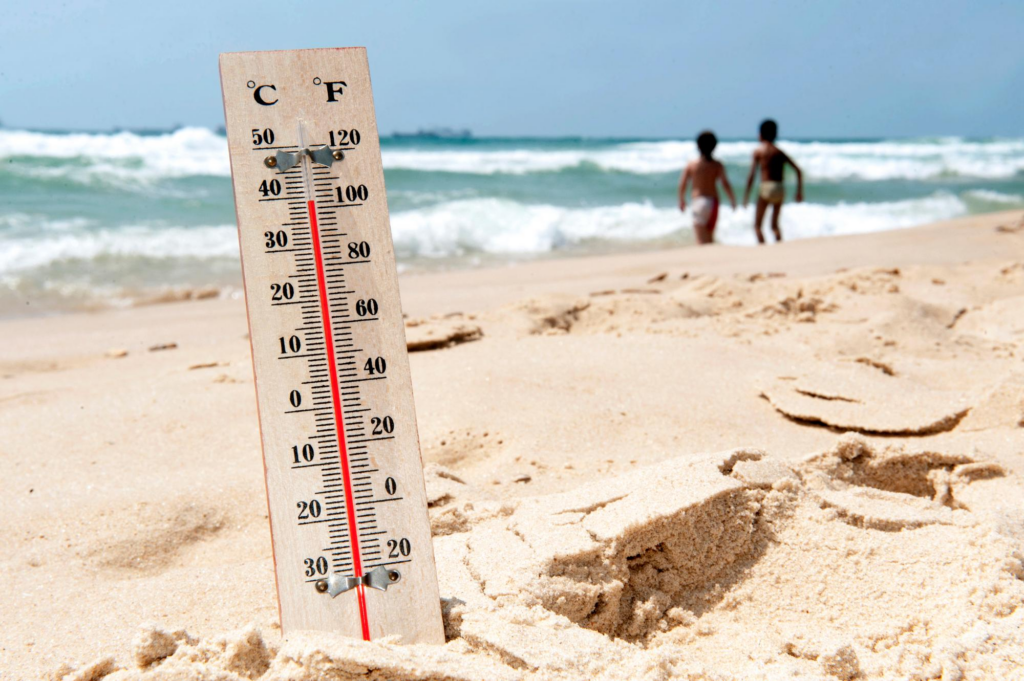Earth will experience prehistoric heat within five years
The World Meteorological Organization (WMO) has released its climate forecast report for the next five years. The report aims to inform policymakers by providing climate projections for the coming years (2023 to 2027).

"This report does not mean that we will permanently exceed the 1.5°C (2.7°F) level set out in the Paris Agreement, which refers to long-term warming over many years," said WMO Secretary-General Petteri Taalas. " However , WMO is sounding the alarm that we will temporarily breach the 1.5°C level with increasing frequency."
The WMO warning comes with its forecast that there is a 98 percent chance that at least one of the next five years will exceed the hottest record on record . El Niño and climate change are likely to drive this temperature spike.
"El Niño is expected to develop in the coming months, which will combine with human-induced climate change to push global temperatures into uncharted territory," Taalas said. "This will have profound implications for health, food security, water management and the environment. We need to be prepared."
El Niño occurs when sea surface temperatures in the central and eastern tropical Pacific Ocean are much warmer than average, leading to changes in atmospheric circulation. More heat in the atmosphere and warmer ocean surface temperatures can lead to increased wind speeds in tropical storms and strongly affect marine life along the Pacific coast.
In addition, WMO predicts that Arctic warming could be three times higher than the global average. That's what experts are concerned about.
"For most of Earth's history, Earth has been without polar ice caps," said Chris Mays, a lecturer in paleontology at University College Cork, Ireland. "But the transition from an icy world (like today) to an ice-free world is usually much slower. We are moving towards an ice-free Earth, but the speed at which things are changing is reminiscent of the most extreme and destructive changes in Earth's past. warm event."
In terms of rainfall, WMO forecasts point to increases in the Sahel, northern Europe, Alaska and northern Siberia, with decreases expected in the Amazon and parts of Australia.
In 2015, our chances of exceeding 1.5°C were zero; but since then, the odds have steadily increased. Between 2017 and 2021, we have a 10% chance of exceeding the levels set by the Paris Agreement . According to the latest WMO projections, there is a 66% or greater chance that global near-surface temperatures will exceed pre-industrial levels of 5.2027°C between now and at least one year from now.
Apparently, the WMO forecast has experts concerned. "Predictions of the hottest year on record for the next five years pose further complications for the health of people around the world," said Belle Workman, a Melbourne climate futures researcher at the University of Melbourne. "We know that climate change negatively affects health in multiple ways, including through the direct physical effects of heat waves, such as heat stroke, and the indirect effects of rising temperatures, such as leading to food and water insecurity."
Some experts emphasized the soundness of the science behind these predictions. "These data were used to cover the entire Earth using a combination of ground and satellite measurements, and were thoroughly quality-controlled by meteorological agencies and scientific researchers around the world," said Janette Lindesay of the Australian National University's Fenner School of Environment and Society. "Climate system modeling by 11 different institutions has been used to generate projections for the period 2023 to 2027, providing a high degree of confidence in the projections as they are re replicated across different research groups."
Article source: newatlas


